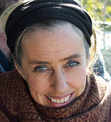Georgi Y. Johnson's Blog: I AM HERE - Opening the Windows of Life & Beauty, page 7
March 7, 2020
The Dawn of Disease #Nonduality
As an event taking place at the birth of time, creation is a rupture. At the same time as there is perception through divinity and all the qualities of True Nature, there is also perception through division, agony, loss, longing, and all the emotions of suffering. The split of the one into two has a bright light of existential shock and pain. This first shock of light is partly an initiation of pain. The dawn of time is also the dawn of the suffering, or passion, of creation.
In the immediate aftermath of pain, there is something bitter added to the sweetness of True Nature. This is an uncomfortable feeling of wrongness. There is an agony in the universal innocence and a sense of doom. Out of this wrongness, we long for that seamless unity and realize that it’s absolute dominion over experience has been lost.
We begin to seek reunion by resisting all that feels wrong and pursuing all that feels whole. Yet the forms appearing through the lenses of wrongness, agony, and division, are loud and compelling. Appearing within the existential shock of creation, they obscure the freedom behind the fear; the love behind the grief; and the silence behind the noise.
When the appearance of otherness is associated with wrongness and pain, the other becomes tagged as a stranger and a danger. In the apprehension of pain, fear is born, and we decide that the other is the threat. This other is no longer seen as an expression of ourselves, but as an entirely separate form with separate origins.
From unity, divinity, harmony, and peace, our consciousness is now hijacked by division, discord, dissonance, and conflict. The expansive, excitement of life is now contracting into the fear of being alive. We begin to forget who we are.
In the agenda to avoid suffering, consciousness splits from itself and a new, dreadful dimension is born – one filled with a menacing sense of fear and threat. These contracting energies are superficial, reductive, hypnotic, dissociative, divisive and addictive.
This time-based dread takes the pain of the past and projects it onto the future, accumulating fear. It enslaves the mind to beliefs that claim authority over experience and even over the consciousness that gives those beliefs life.
Based on past pain and the agenda to avoid it in the present or future, these beliefs bring living nourishment to collective pools of suffering. Generated by the desire to get free of suffering, these beliefs transmit suffering, for suffering is their power supply. They are born of suffering; they seek out suffering; they end in suffering.
By despairing at our despair, we increase the energy of despair. In feeling wrong to feel wrong, we replenish the wrongness. Pulling back from the pain of separation, we increase the energy of absence in the space between us.
We hide our sentience in the world of things, nested within a cityscape of thoughts, and as we shuffle our well-clad, insouciant bodies through the consumer liturgy of lack, we wonder why we feel so lost and alone.
And it becomes a pandemic of the psyche. Attempting to get rid of murder, we murder the murderers. In a war against hatred, we hate the haters. Concerned with evil, we demonize the evildoers. We fight to get peace; struggle to relax; despair in our care; agitate against disease; dread our fear. We neglect the sense of abandonment; betray the forsaken; revile our shame; condemn our guilt.
In our agenda to be good and not bad, to get the pleasure and not the pain, to be glad and not sad, to be sterile and not virile, we replenish the pools of suffering. Now, we are not only projecting a moment of pain from the past onto the future but a timeless ocean of horror.
Perceiving through suffering, we pave the way to suffering. Life is at war with life; consciousness is shocked by consciousness; love is contemptuous of love, and the soul at peace is associated with death.
Even the sense of infinite possibility in the future begins to wilt. By degrees, the senses begin to shut down, narrowing the field of vision, numbing the sense of touch, muting sound and blanketing the felt sense of being alive. Something is going on, but often, we hardly feel part of it. Brain networks fixate in default routes and a fog of senselessness and confusion clouds the mind. Lacking sensory input, the heart checks out, and the unexplained, closed doors mean that visitors dwindle.
Wherever there is pain, there is otherness. Fallible through waves of pain, the body is now perceived as other. A battle for control between head, body, and heart ensues and the casualty is wellbeing.
Obscuring our consciousness of ease, there is now a prevalence of dis-ease.
March 6, 2020
I Am Here in the Storm
Call me Corona and I will teach you about the breath of life, the rivers of impermanence and the wisdom of unity.
Each shock, physical affliction, disease or medical event appears directly as a sentient happening within the field of consciousness. Here, there is inherently no separation between body, heart, and mind. These three layers offer differing reflections of one undivided direct experience. Each is a kind of perceptive window to the phenomena of suffering, and each offers its own translation of the original cause. Together, they make up the music of life.
All experience arises in conscious awareness through vibration. Vibration is always an effect of a deeper cause. Something moves and this causes a series of effects that show up as living experience. Experience has layers that differ through mental, emotional and physical vibrations, yet this differentiation doesn’t mean that the cause is divisible. Body, heart, and mind are like different parts of a musical instrument. Their pitch differs, but they are all in service to the melody.
Imagine a strong wind is blowing. Let’s call her Corona. The effect of the wind is felt through the impressions on the body. Perhaps it’s hard to breathe, as the confrontation of high-pressure wind and lower pressure air in the lungs builds turbulence around the nose and mouth. Perhaps, we feel pressure on the mass of the body and respond by centering into gravity – a pivotal anchor that allows us to lean into the wind to maintain balance. These motoric reflexes are ingenious pathways of resistance and flexibility guided by the maintenance of the stability of the whole. But in changeable conditions, they require both vitality and mindfulness. Each time we move into a fixed position, we can be surprised by a sudden gust of wind that will awaken us with a shock of consciousness to the need to adapt. The ability of the body to stand in the wind will be affected by the form of the body itself – including its history, its strengths and weaknesses, and individual sensitivities. The wind of calling us to awaken.
Now imagine standing in that tumultuous wind but perceiving through the window of sentient awareness – receiving the impressions in the area of the heart. The sensation of having no air can be received as a sense of shock, panic, or as a sense of amazement (a gasp of surprise). This means there can be an impression of terror or excitement. The pressure on the body can awaken old structures of conformity, learned helplessness, humiliation and other sentient vibrations linked to the lack of safety. But here, that insecurity is not only physical but also existential. A process is happening connected with our fundamental trust and esteem. Each time we try to find emotional homeostasis with a certain motoric position, a gust of wind can come from another direction. This could evoke a sense of injustice, the feeling of being a victim in a vindictive world, or the doom-like feeling that we are never truly allowed to relax. Each gust of wind has the power to conjure up a host of unique, individual emotional impressions, based on history, strength and weaknesses and individual sensitivities.
Now, imagine how this tumultuous wind, is affecting us through the perceptive window of the conscious mind – the area of beliefs, thoughts, memory and imagination. For a moment of shock, we are simply a disembodied witness of the whole happening. As soon as we’ve got our breath back, we might cry “Oh my G-od”, or “Mama-mia,” or another exclamation of the ineffable. The excitement or fear could be processed through laughter or steeled into a grim determination to survive. The attention darts rapidly in and out of the body, such that it’s unclear whether thoughts are creating the physical response or following them. Background beliefs are mobilized, which could even be ancestral. These beliefs direct coping strategy and influence patterns of resistance and surrender. For example, one belief around the whole area of crisis can mean we grab hold of a lamppost, or anything or anyone for support. Another belief could lead us to an opposite reflex, which is to stubbornly make it alone. A third belief structure could manifest as a reflex to support or protect others. The way our thoughts react on the wind will be unique, based on past learnings, conclusions and ethics in the areas of survival, nature, shock and the unknown.
If the wind persists, there’s the possibility that the mind will find stillness in the storm. Thoughts subside and tumultuous patterns of busy mind bow to the more vital, tumultuous wind. An attuned sense of peace can arise which allows real-time responsivity. There is now a graceful harmony with the wind and a humbling, untraceable, uncontainable base-tone of holy globality.
Gently, quietly over the horizon, there can be heard an intricate, exquisite orchestra. Could it be the music of one humanity? Our consciousness is pulsing with the whole. The split between inner and outer worlds is fading as we move into the bliss of pure aliveness and the senses open in the here and now.
It’s an exhilarating breath of fresh air.
January 31, 2020
PROGRAM: i-Exist Israel 2020: Sensing the Miracle with Georgi & Bart

Morning meetup at Chashymie Center in Zichron Yaakov OR
12 pm in gathering at Benyamina Rail Station (a direct line from Ben-Gurion Airport)
12:30: Departing in minibusses/ cars
1:30 pm
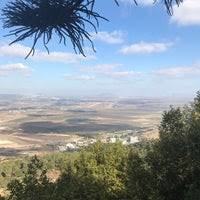 THE MUHRAQA
THE MUHRAQAElijah’s cave. Meditation on the pinnacle of Mount Carmel-
Opening to the miracle of space
2:30
Lunch: Druze Pitta
Travel and settle at Casa Nova Guesthouse on Mount Tabor
Dinner (tba)
Evening Meeting at Mount Tabor 8 – 10 pm
Welcome – Sensing the Miracle Talk + Meditation
 THURSDAY 26th MARCH
THURSDAY 26th MARCH5:30 – 7 am
Sunrise
Walk and meditation
Breakfast
9 am – 1 pm
Teaching + Meditation
The Mystery of Bliss
Transfiguration
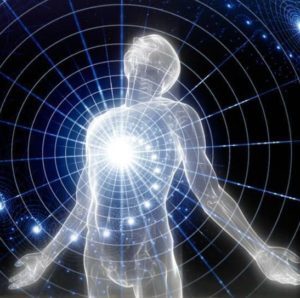 1-4 pm Lunch + siesta
1-4 pm Lunch + siesta4 pm – 6 pm
Field Meditation + sunset
Mystery of the Light Body
7 pm Dinner
 FRIDAY 27th MARCH
FRIDAY 27th MARCHBreakfast
9 am
Bliss as a Healing Factor
Teaching & Meditation
12pm on our way to Nazereth (one hour drive)
2 pm Check in Vitrage Guest House,
Mary’s Well and Elbabour Spice Market
Flashmob meditation in Church
The Sense of Destiny
Dinner:
8 pm Evening Meditation
Destiny & Mystery
 SATURDAY 28th MARCH
SATURDAY 28th MARCHBreakfast
Meet up Planning
Check out 10:30 am
To Tiberius (one hour drive 12 pm)
Mount of Beatitudes Meditation
Mount Eremos (Eremia) – God exalts, the lord lifts up
The Sense of Blessing
Find lunch, Siesta
Free time and check-in
Dinner 6 pm Monastry (ask what time possible)
8 pm Jesus Boat. Meeting on the Lake
The Practise of Observation
Center of the earth
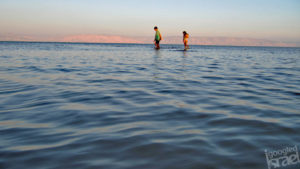 SUNDAY 29th MARCH
SUNDAY 29th MARCHBreakfast
9 – 1 pm TEACHING
The Miracle of Being Alive
(Fish symbolize the connection between spiritual and physical direction)
Free until 6 pm
7:30 PM Evening Meeting
Miracle of LIFE 2
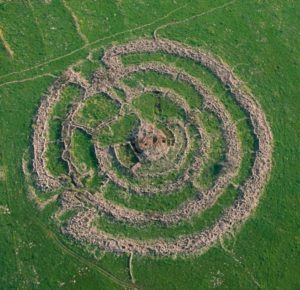 MONDAY 30th MARCH
MONDAY 30th MARCHBreakfast (tba)
Field Trip to the Golan Heights:
Meditation Theme:
Sensing life through different forms
BANNIAS Waterfalls
NIMROD Fortress
Rujm el-Hiri
 TUESDAY 31st MARCH
TUESDAY 31st MARCHBreakfast (tba)
Drive to Jerusalem, visiting the Mount of Olives and checking in to the Imperial Hotel. Touring the Old City of Jerusalem together.
Dinner (tba)
ONENESS & THE MIRACLE
Evening Meeting on the rooftop overlooking the Old City of Jerusalem
WEDNESDAY 1st APRIL
-End of Retreat-
December 31, 2019
i-Exist Israel 2020: Sensing the Miracle with Georgi & Bart
 March 25 – April 1, 2020
March 25 – April 1, 2020Join Georgi & Bart to meditate & attune in an active-spiritual retreat in the Land of Israel.
Galilee, Golan & the Old City of Jerusalem
Early bird price including workshop, food, and accommodation:
1580 Euros, reserved with a deposit of 580 Euros payable until February 14th, 2020.
Arousing the senses in the opening to the miracle of physical manifestation.
From slavery to liberation: the body as a rite of passage: “The way out is through.”
Sensing earth energies and opening the border between the inner and outer universe.
Exploring the timeless through history and penetrating the future.
Accessing the physical through portals of silence, stillness, and emptiness.
Let the waters settle and you will see the moon and the stars mirrored in your own being.
– Rumi
The week-long active spiritual retreat with Bart ten Berge and Georgi Y. Johnson opens with several nights hosted by the Franciscans on the height of Mount Tabor, (Transfiguration); a night in Nazareth (Accentuation), several days based at the Casa Nova of Tiberius on the shores of the Sea of Galilee (Beatitudes); visits to neolithic sites on the Golan Heights (Rujm el-Hiri), to the cave of the Greek god Pan, the Medieval Nimrod Fortress and meditations near the Banias waterfalls. Our final night will be spent within the walls of the Old City of Jerusalem and meditating from an exclusive rooftop terrace overlooking the Old City and holy sites.
The price of the retreat includes private rooms, breakfast and dinner each day, and transport within Israel, entry fees and the workshop itself.
Those from Israel seeking to take part without accommodation, food or using their own transport should contact us: info@iamhere.life.
The theme of the retreat is Touching the Miracle. Working deeply with the opening of the Root and Hara (2nd) Chakra, in order to encourage the relaxation and awakening of the senses and to support the unconditional freedom of the heart. Our aim is to facilitate an unconditional connection with essence prior to the differentiation into form (the depth of spiritual healing).
For more information and to register: info@iamhere.life, Whatsapp: +972524297196
Stay notified! Follow the event on Facebook.
Full PROGRAM
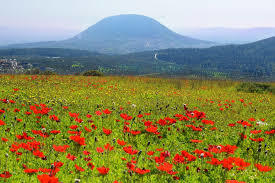
i-Exist Israel 2020: Touching the Miracle with Georgi & Bart
 March 25 – April 1, 2020
March 25 – April 1, 2020Join Georgi & Bart to meditate & attune in an active-spiritual retreat in the Land of Israel.
Galilee, Golan & the Old City of Jerusalem
Early bird price including workshop, food, and accommodation:
1580 Euros, reserved with a deposit of 580 Euros payable until February 1st, 2020.
Arousing the senses in the opening to the miracle of physical manifestation.
From slavery to liberation: the body as a rite of passage: “The way out is through.”
Sensing earth energies and opening the border between the inner and outer universe.
Exploring the timeless through history and penetrating the future.
Accessing the physical through portals of silence, stillness, and emptiness.
Let the waters settle and you will see the moon and the stars mirrored in your own being.
– Rumi
The week-long active spiritual retreat with Bart ten Berge and Georgi Y. Johnson opens with several nights hosted by the Franciscans on the height of Mount Tabor, (Transfiguration); a night in Nazareth (Accentuation), several days based at the Casa Nova of Tiberius on the shores of the Sea of Galilee (Beatitudes); visits to neolithic sites on the Golan Heights (Rujm el-Hiri), to the cave of the Greek god Pan, the Medieval Nimrod Fortress and meditations near the Banias waterfalls. Our final night will be spent within the walls of the Old City of Jerusalem and meditating from an exclusive rooftop terrace overlooking the Old City and holy sites.
The price of the retreat includes private rooms, breakfast and dinner each day, and transport within Israel, entry fees and the workshop itself.
Those from Israel seeking to take part without accommodation, food or using their own transport should contact us: info@iamhere.life.
The theme of the retreat is Touching the Miracle. Working deeply with the opening of the Root and Hara (2nd) Chakra, in order to encourage the relaxation and awakening of the senses and to support the unconditional freedom of the heart. Our aim is to facilitate an unconditional connection with essence prior to the differentiation into form (the depth of spiritual healing).
For more information and to register: info@iamhere.life, Whatsapp: +972524297196
Stay notified! Follow the event on Facebook.
Full PROGRAM [Coming Soon]

December 21, 2019
i-Exist Israel 2020
An Adventure into the Mystery and Awe of the Land of Israel with Georgi Y. Johnson & Bart ten Berge.
March 25 – April 1st 2020
Early bird discount!
Until February 1st, there is an early-bird discount of $350! The cost of the retreat (not including flights but including food and private accommodation) will be $1500.

The week-long active spiritual retreat with Bart ten Berge and Georgi Y. Johnson opens with several nights hosted by the Franciscans on the height of Mount Tabor, (Transfiguration); a night in Nazareth (Accentuation), several days based at the Casa Nova of Tiberius on the shores of the Sea of Galilee; visits to neolithic sites in the Golan, to the cave of the Greek god Pan, the Medieval Nimrod Fortress and meditations near the Banias waterfalls. Our final night will be spent within the walls of the Old City of Jerusalem and meditating from an exclusive rooftop terrace overlooking the Old City and holy sites.
The theme of the retreat is Touching the Miracle. Working deeply with the opening of root and hara (2nd) chakra, in order to encourage the relaxation and awakening of the senses and to support the unconditional freedom of the heart. Our aim is to facilitate an unconditional connection with essence prior to the differentiation into form (the depth of spiritual healing).
The retreat is based on private rooms for all participants, unless there a desire for shared rooms.
March 31, 2019
What Everyone Should Know About Antidepressants
Millions at risk from antidepressant withdrawal, new review concludes
The Journal of Addictive Behaviors has today published a new systematic review which shows that antidepressant withdrawal is much more widespread, severe and long-lasting than indicated by current guidelines, with millions of antidepressant users in the U.K. potentially affected. ‘A Systematic Review into the Incidence, Severity and Duration of Antidepressant Withdrawal Effects: Are Guidelines Evidence-Based?’ was undertaken by Dr James Davies, University of Roehampton and Professor John Read, University of East London, on behalf of the All Party Parliamentary Group for Prescribed Drug Dependence.
The review indicates that an average of 56% of patients who stop or reduce their antidepressants experience withdrawal symptoms, with 46% of these reporting their symptoms as severe. Furthermore, most of the studies reviewed on duration found that a significant proportion of patients experienced withdrawal symptoms for more than two weeks, and that it is not uncommon for patients to experience symptoms for several weeks, months, or longer. According to one study, 40% of patients experience symptoms for at least 6 weeks, and another indicates that 25% experience symptoms for at least 3 months.
Based on this data, the authors estimate that around 4 million people in England may experience symptoms when withdrawing from antidepressants, and around 1.8 million may experience these as severe. In all, these findings contradict current national clinical guidelines (issued by NICE – the National Institute for Health and Care Excellence), which state that antidepressant withdrawal symptoms ‘are usually mild and self-limiting over about 1 week but can be severe’[1].
Dr James Davies: ‘This new review of the research reveals what many patients have known for years – that withdrawal from antidepressants often causes severe, debilitating symptoms which can last for weeks, months or longer. Existing NICE guidelines fail to acknowledge how common withdrawal is and wrongly suggest that it usually resolves within one week. This leads many doctors to misdiagnose withdrawal symptoms, often as relapse, resulting in much unnecessary and harmful long-term prescribing.’
Sir Oliver Letwin MP, chair of the APPG for Prescribed Drug Dependence: ‘This systematic review provides important new data on antidepressant withdrawal which will be considered by Public Health England as part of their current review into prescribed drug dependence. The data suggests that existing medical guidelines in this area should be urgently updated to reflect the fact that antidepressant withdrawal is much more common, severe and long-lasting than previously stated. Furthermore, we hope that other medical bodies will take note of this new research, and update their own guidance accordingly.’
The review can be found at http://prescribeddrug.org/wp-content/...
[1]NICE, 2009, 1.9.2.1 in CG90
March 16, 2019
Refining the Science of Psychological Inheritance
UNIVERSITY OF CAMBRIDGE
Evidence has been building in recent years that our diet, our habits or traumatic experiences can have consequences for the health of our children – and even our grandchildren. The explanation that has gained most currency for how this occurs is so-called ‘epigenetic inheritance’ – patterns of chemical ‘marks’ on or around our DNA that are hypothesized to be passed down the generations. But new research from the University of Cambridge suggests that this mechanism of non-genetic inheritance is likely to be very rare.
A second study, also from Cambridge, suggests, however, that one way that environmental effects are passed on may, in fact, be through molecules produced from the DNA known as RNA that are found in a father’s sperm.
The mechanism by which we inherit innate characteristics from our parents is well understood: we inherit half of our genes from our mother and a half from our father. However, the mechanism whereby a ‘memory’ of the parent’s environment and behavior might be passed down through the generations is not understood.

Epigenetic inheritance has proved a compelling and popular explanation. The human genome is made up of DNA – our genetic blueprint. But our genome is complemented by a number of ‘epigenomes’ that vary by cell type and developmental time point. Epigenetic marks are attached to our DNA and dictate in part whether a gene is on or off, influencing the function of the gene. The best understood epigenetic modification is DNA methylation, which places a methyl group on one of the bases of DNA (the A, C, G or T that make up our genetic code).
One model in which DNA methylation is associated with epigenetic inheritance is a mouse mutant called Agouti Viable Yellow. The coat of this mouse can be completely yellow, completely brown, or a pattern of these two colours – yet, remarkably, despite their different coat colours, the mice are genetically identical.
The explanation of how this occurs lies with epigenetics. Next to one of the key genes for coat colour lies a section of genetic code known as a ‘transposable element’ – a small mobile DNA ‘cassette’ that is actually repeated many times in the mouse genome but here acts to regulate the coat colour gene.
As many of these transposable elements come from external sources – for example, from a virus’s genome – they could be dangerous to the host’s DNA. But organisms have evolved a way of controlling their movement through methylation, which is most often a silencing epigenetic mark.
In the case of the gene for coat colour, if methylation switches off the transposable element completely, the mouse will be brown; if acquisition of methylation fails completely, the mouse will be yellow. But this does not affect the genetic code itself, just the epigenetic landscape of that DNA segment.
And yet, a yellow-coated female is more likely to have yellow-coated offspring and a brown-coated female is more likely to have brown-coated offspring. In other words, the epigenetically regulated behaviour of the transposable element is somehow being inherited from parent to offspring.
A team led by Professor Anne Ferguson-Smith at Cambridge’s Department of Genetics set out to examine this phenomenon in more detail, asking whether similar variably-methylated transposable elements existed elsewhere that could influence a mouse’s traits, and whether the ‘memory’ of these methylation patterns could be passed from one generation to the next. Their results are published in the journal Cell.
The researchers found that while these transposable elements were common throughout the genome – transposable elements comprise around 40% of a mouse’s total genome – the vast majority were completely silenced by methylation and hence had no influence on genes.
Only around one in a hundred of these sequences were variably-methylated. Some of these are able to regulate nearby genes, whereas others may have the ability to regulate genes located further away in the genome in a long-range capacity.
When the team looked at the extent to which the methylation patterns on these regions could be passed down to subsequent generations, only one of the six regions they studied in detail showed evidence of epigenetic inheritance – and even then, the effect size was small. Furthermore, only methylation patterns from the mother, not the father, were passed on.
“One might have assumed that all the variably-methylated elements we identified would show memory of parental epigenetic state, as is observed for coat colour in Agouti Viable Yellow mice,” says Tessa Bertozzi, a PhD candidate and one of the study’s first authors. “There’s been a lot of excitement and hype surrounding the extent to which our epigenetic information is passed on to subsequent generations, but our work suggests that it’s not as pervasive as was previously thought.”
“In fact, what we showed was that methylation marks at these transposable elements are reprogrammed from one generation to the next,” adds Professor Ferguson-Smith. “There’s a mechanism that removes methylation from the vast majority of the genome and puts it back on again, once in the process of generating eggs and sperms and again before the fertilised egg implants into the uterus. How the methylation patterns at the regions we have identified get reconstructed after this genome-wide erasure is still somewhat of a mystery.
“We know there are some genes – imprinted genes for example- that do not get reprogrammed in this way in the early embryo. But these are exceptions, not the rule.”
Professor Ferguson-Smith says that there is evidence that some environmentally-induced information can somehow be passed down generations. For example, her studies in mice show that the offspring of a mother who is undernourished during pregnancy are at increased risk of type 2 diabetes and obesity – and their offspring will in turn go on to be obese and diabetic. Again, she showed that DNA methylation was not the culprit – so how does this occur?
The answer may come from research at the Wellcome/Cancer Research UK Gurdon Institute, also at the University of Cambridge, in collaboration with the lab of Professor Isabelle Mansuy from the University of Zürich and Swiss Federal Institute of Technology. In a study carried out in mice and published in the journal Molecular Psychiatry, they report how the ‘memory’ of early life trauma can be passed down to the next generation via RNA molecules carried by sperm.
Dr Katharina Gapp from the Gurdon Institute and the Mansuy lab have previously shown that trauma in postnatal life increases the risk of behavioural and metabolic disorders not only in the directly exposed individuals but also in their subsequent offspring.
Now, the team has shown that the trauma can cause alterations in ‘long RNA’ (RNA molecules containing more than 200 nucleotides) in the father’s sperm and that these contribute to the inter-generational effect. This complements earlier research that found alterations in ‘short RNA’ molecules (with fewer than 200 nucleotides) in the sperm. RNA is a molecule that serves a number of functions, including, for some of the long versions called messenger RNA, ‘translating’ DNA code into functional proteins and regulating functions within cells.
Using a set of behavioral tests, the team showed that specific effects on the resulting offspring mediated by long RNA included risk-taking, increased insulin sensitivity, and overeating, whereas small RNA conveyed the depressive-like behavior of despair.
Dr. Gapp said: “While other research groups have recently shown that small RNAs contribute to inheritance of the effects of chronic stress or changes in nutrition, our study indicates that long RNA can also contribute to transmitting some of the effects of early life trauma. We have added another piece to the puzzle for potential interventions in transfer of information down the generations.”
###
Reference
Kazachenka, A, Bertozzi, TM et al. Identification, Characterization, and Heritability of Murine Metastable Epialleles: Implications for Non-genetic Inheritance. Cell; 25 Oct 2018; DOI: 10.1016/j.cell.2018.09.043
Gapp K et al. Alterations in sperm long RNA contribute to the epigenetic inheritance of the effects of postnatal trauma. Molecular Psychiatry; 30 Oct 2018; DOI: 10.1038/s41380-018-0271-6
March 14, 2019
Spiritual Psychology USA, Blacksburg, Virginia, August 22 @ 9:00 am – August 26 @ 5:00 pm
In this first module of the Spiritual Psychology education we will learn:
1. To open and refine the felt sense, deepening connection, and alignment to ourselves and the world.
2. To relax into allowing the healing impact of consciousness to move through the physical, as the primary agent of healing.
3. To meditate with a relaxed method that instantly invites more grounding, balance, alignment, and openness into the experiential field.
4. To inquire into our fundamental psychological assumptions about ourselves and others, moving from limited belief systems to the realm of possibility and transformation.
[image error]The Spiritual Psychology Education offers carefully structured exercises, meditations, knowledge, and training to allow increasing depths of happiness and freedom. This grounded, integrated system for inner growth, healing, and spiritual psychology liberates fear and allows for the joyful reunion of individual purpose with true nature. The education brings the skills and wisdom needed to become a practitioner of spiritual psychology and/or to deepen the feeling connection with any chosen way of life.
This is a unique chance to study with Bart ten Berge AND Georgi Y. Johnson in Blackburg, Virginia, USA.
Module 1 of Phase 1 is perhaps the most profound of all the modules within the seven-year system. In the five days, you’ll learn exercises and meditations that support the relaxation and opening of the felt-sense through contacting the subtle energy body. Safe, grounded and friendly, these workshops are the first step in reuniting with the source of all we are:: the first step in the direction of home.
For all upcoming events in the US with Bart and/or Georgi, CLICK HERE
About Georgi & Bart
[image error]Born in Holland, Bart ten Berge is a qualified medical and homeopathic doctor with some 30 years experience pioneering, teaching and transmitting the system now formulated as the Spiritual Psychology Education.
British-born Georgi Y. Johnson is the author of a series of books on spirituality and healing, refining and integrating the ancient insights of nonduality and timeless mysticism into the practice of psychology. Together and individually, they teach and give private mentorship around the world.
The ISSP Education in Spiritual Psychology consists of three phases, with each phase forming a complete training. To begin a subsequent level, the previous level must have been completed, or a similar course followed (to be approved by the facilitator). All three phases are individually certified by the ISSP and are recognized by the CRKBO (The Central Register for Short Vocational Education) in the Netherlands.
You can read more about spiritual psychology here: http://www.inner-growth.org/the-healing-education/
For questions and/or to register, contact Georgi at info@iamhere.life
+972 524297196
Spiritual Psychology USA, Blackburg, Virginia, August 22 @ 9:00 am – August 26 @ 5:00 pm
In this first module of the Spiritual Psychology education we will learn:
1. To open and refine the felt sense, deepening connection, and alignment to ourselves and the world.
2. To relax into allowing the healing impact of consciousness to move through the physical, as the primary agent of healing.
3. To meditate with a relaxed method that instantly invites more grounding, balance, alignment, and openness into the experiential field.
4. To inquire into our fundamental psychological assumptions about ourselves and others, moving from limited belief systems to the realm of possibility and transformation.
[image error]The Spiritual Psychology Education offers carefully structured exercises, meditations, knowledge, and training to allow increasing depths of happiness and freedom. This grounded, integrated system for inner growth, healing, and spiritual psychology liberates fear and allows for the joyful reunion of individual purpose with true nature. The education brings the skills and wisdom needed to become a practitioner of spiritual psychology and/or to deepen the feeling connection with any chosen way of life.
This is a unique chance to study with Bart ten Berge AND Georgi Y. Johnson in Blackburg, Virginia, USA.
Module 1 of Phase 1 is perhaps the most profound of all the modules within the seven-year system. In the five days, you’ll learn exercises and meditations that support the relaxation and opening of the felt-sense through contacting the subtle energy body. Safe, grounded and friendly, these workshops are the first step in reuniting with the source of all we are:: the first step in the direction of home.
For all upcoming events in the US with Bart and/or Georgi, CLICK HERE
About Georgi & Bart
[image error]Born in Holland, Bart ten Berge is a qualified medical and homeopathic doctor with some 30 years experience pioneering, teaching and transmitting the system now formulated as the Spiritual Psychology Education.
British-born Georgi Y. Johnson is the author of a series of books on spirituality and healing, refining and integrating the ancient insights of nonduality and timeless mysticism into the practice of psychology. Together and individually, they teach and give private mentorship around the world.
The ISSP Education in Spiritual Psychology consists of three phases, with each phase forming a complete training. To begin a subsequent level, the previous level must have been completed, or a similar course followed (to be approved by the facilitator). All three phases are individually certified by the ISSP and are recognized by the CRKBO (The Central Register for Short Vocational Education) in the Netherlands.
You can read more about spiritual psychology here: http://www.inner-growth.org/the-healing-education/
For questions and/or to register, contact Georgi at info@iamhere.life
+972 524297196
I AM HERE - Opening the Windows of Life & Beauty
- Georgi Y. Johnson's profile
- 30 followers


